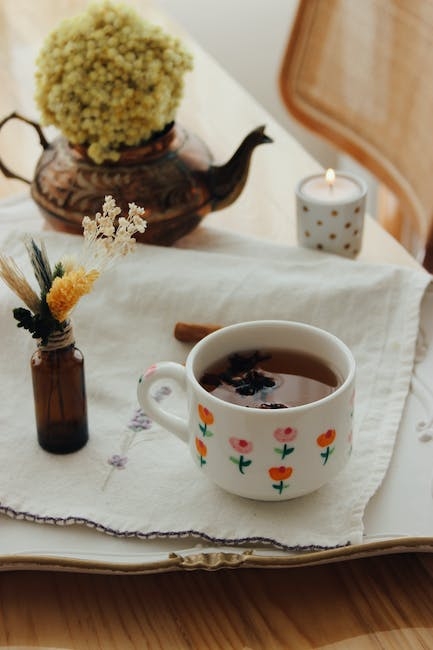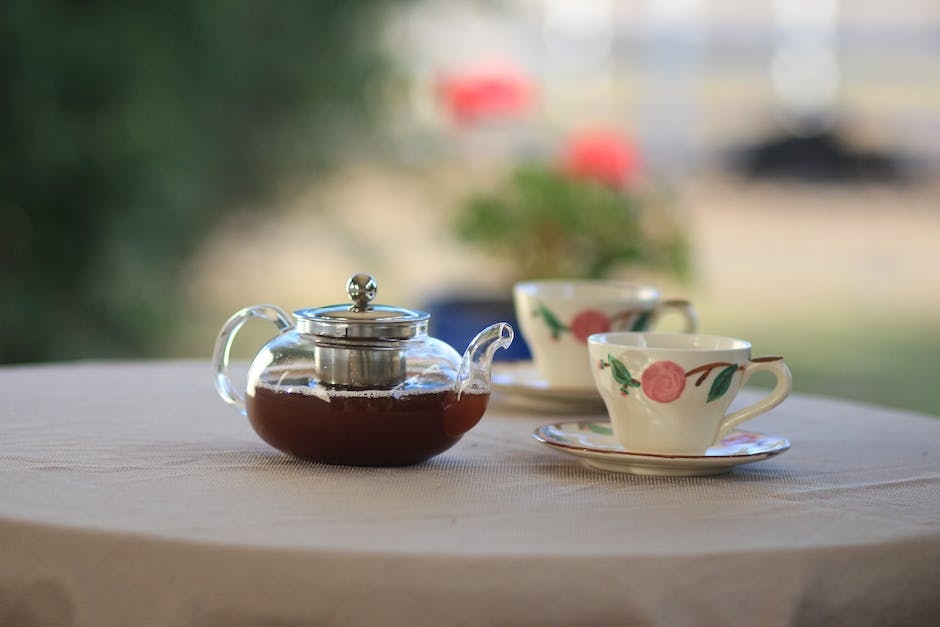Introduction to Ceylon Tea Grades
Welcome to the world of Ceylon tea grades! If you’re a tea lover like me, you might already be familiar with the rich and aromatic teas that come from the beautiful island of Sri Lanka, formerly known as Ceylon.
Ceylon tea is renowned for its exceptional quality and distinctive flavors, which are a result of the unique climate and terrain in the region. But what sets Ceylon tea apart from other types of tea is its grading system, which categorizes the tea leaves based on their appearance, size, and quality.
In this article, we’ll explore the different grades of Ceylon tea, the factors that affect these grades, and the best uses for each grade. So, whether you’re a tea connoisseur looking to broaden your knowledge or a tea enthusiast discovering Ceylon tea for the first time, this article is for you!
So, let’s dive in and explore the fascinating world of Ceylon tea grades!
Types of Ceylon Tea Grades
Ceylon tea grades can be categorized into several types, each denoting a specific quality and characteristic of the tea leaves. Let’s take a look at some of the most common Ceylon tea grades:
- Orange Pekoe (OP): This is the most widely known and popular grade of Ceylon tea. Don’t let the name deceive you – it doesn’t mean the tea has an orange flavor. Instead, it refers to the distinctive color of the dried tea leaves. OP grade tea often consists of long, wiry leaves with a smooth and full-bodied flavor.
- Broken Orange Pekoe (BOP): As the name suggests, BOP grade tea consists of broken tea leaves, which is a result of the production process. This grade offers a robust and stronger flavor compared to OP grade tea. It’s commonly used for making strong black teas and is perfect for those who prefer a bold and invigorating cup of tea.
- Flowery Broken Orange Pekoe (FBOP): This grade is a step up from BOP and offers a finer selection of tea leaves. FBOP grade tea is characterized by the presence of golden tips and small broken leaves that contribute to a rich and flavorful brew. It’s often used to create teas with a deep amber color and a slightly floral aroma.
- Broken Orange Pekoe Fannings (BOPF): BOPF grade represents smaller tea particles compared to the previous grades mentioned. These fine tea particles produce a quick infusion and a robust flavor. BOPF grade tea is commonly used in tea bags and is popular in markets where convenience and affordability are prioritized.
- Dust: The dust grade consists of very small tea particles, almost like powder. Dust grade tea is typically used in tea bags and provides a strong, bold flavor. Although it may not offer the same complexity as the higher grades, it still remains a popular choice for those seeking a quick and strong cup of tea.
These are just a few examples of the different Ceylon tea grades available. Each grade has its unique characteristics, allowing tea lovers to explore various flavors and experiences. The selection of a Ceylon tea grade largely depends on personal preference and desired brewing method.
Now that you’re familiar with the different Ceylon tea grades, let’s delve into the factors that play a significant role in determining these grades.
Factors that Affect Ceylon Tea Grades
Several factors come into play when determining the grades of Ceylon tea. These factors influence the appearance, quality, and flavor profile of the tea leaves. Let’s explore some of the key factors:
- Elevation: The altitude at which the tea is grown plays a crucial role in its quality. Ceylon tea is grown in different regions across Sri Lanka, ranging from low-level plantations to high-altitude estates. High-grown teas are typically of superior quality, as the cool climate and crisp air enhance the flavor and aroma of the leaves.
- Leaf Size and Shape: The size and shape of the tea leaves also influence their grades. Larger, whole leaves are considered of higher quality, while broken or smaller leaves are typically graded lower. The size of the leaves affects the brewing process and the intensity of the flavors in the cup.
- Plucking Standard: The plucking standard refers to the method and timing of harvesting the tea leaves. Generally, the younger and tender leaves are plucked during the first flush (first harvest), producing a delicate and milder flavor. Subsequent flushes may include slightly mature leaves, resulting in stronger and robust flavors.
- Manufacturing Process: The manufacturing process, including withering, rolling, fermenting, and drying, also influences the tea grades. The careful handling and processing of the leaves determine their appearance and flavor. Improper processing can lead to lower grades due to inconsistencies in the final product.
- Pesticide and Chemical Usage: The use of pesticides and chemicals during cultivation can impact the quality and grades of Ceylon tea. High-quality teas are usually grown using sustainable and organic practices, without the excessive use of chemicals. Hence, teas produced with minimal pesticide usage tend to have higher grades.
- Seasonal Conditions: The weather conditions, rainfall patterns, and temperature fluctuations throughout the tea-growing season can affect the growth and quality of the tea leaves. Adverse weather conditions, such as drought or excessive rainfall, may lead to lower grades due to the impact on leaf growth and flavor development.
These factors work together to determine the final grades of Ceylon tea. It’s important to note that each tea estate and producer may have their own grading systems, but the factors mentioned above serve as a general guideline in understanding the grading process.
Now that we’ve covered the factors influencing the tea grades, let’s compare the different Ceylon tea grades and their characteristics.
Comparison of Ceylon Tea Grades
When comparing Ceylon tea grades, it’s important to consider the appearance, flavor, and brewing characteristics of each grade. Here’s a comparison of some popular Ceylon tea grades:
| Grade | Appearance | Flavor | Brewing Characteristics |
|---|---|---|---|
| Orange Pekoe (OP) | Long, wiry leaves | Smooth, full-bodied flavor with floral notes | Best brewed at a temperature of 185°F (85°C) to 195°F (90°C) for 3-4 minutes |
| Broken Orange Pekoe (BOP) | Broken tea leaves | Robust, strong flavor with hints of malt | Best brewed at a temperature of 195°F (90°C) to 205°F (96°C) for 4-5 minutes |
| Flowery Broken Orange Pekoe (FBOP) | Small broken leaves with golden tips | Rich, flavorful brew with a slightly floral aroma | Best brewed at a temperature of 185°F (85°C) to 195°F (90°C) for 3-4 minutes |
| Broken Orange Pekoe Fannings (BOPF) | Smaller tea particles | Quick infusion with a robust flavor | Best brewed at a temperature of 205°F (96°C) to 212°F (100°C) for 2-3 minutes |
| Dust | Very fine tea particles | Strong, bold flavor | Best brewed at a temperature of 205°F (96°C) to 212°F (100°C) for 2-3 minutes |

As you can see, each grade offers distinct characteristics. The Orange Pekoe (OP) grade is renowned for its smoothness and floral notes, while the Broken Orange Pekoe (BOP) grade provides a stronger and more robust flavor.
If you prefer a tea with a slightly floral aroma, you might enjoy the Flowery Broken Orange Pekoe (FBOP) grade. On the other hand, if you prefer quick infusions and a bold flavor, the Broken Orange Pekoe Fannings (BOPF) or Dust grade might be more suitable.
Remember, the recommended brewing temperatures and times are just guidelines, and you can adjust them according to your personal preference. Whether you prefer a lighter and milder cup or a strong and bold infusion, there’s a Ceylon tea grade that suits your taste.
Now that you’re familiar with the characteristics of each grade, let’s explore the best uses for different Ceylon tea grades.
Best Uses for Different Ceylon Tea Grades
Each Ceylon tea grade has its own unique qualities, which make them suitable for different purposes. Let’s delve into the best uses for the various Ceylon tea grades:
Orange Pekoe (OP): Due to its smooth and full-bodied flavor, Orange Pekoe (OP) grade tea is perfect for enjoying as a standalone drink. Its delicate floral notes make it an excellent choice for afternoon tea or to be savored on its own without any accompaniments.
Broken Orange Pekoe (BOP): With its robust and strong flavor, Broken Orange Pekoe (BOP) grade tea is ideal for making iced tea or adding milk and sugar. Its bold taste stands up well to the addition of other flavors, making it a popular choice for making classic milk tea.
Flowery Broken Orange Pekoe (FBOP): The rich and flavorful brew produced by Flowery Broken Orange Pekoe (FBOP) grade tea makes it perfect for pairing with baked goods, such as scones or biscuits. The slightly floral aroma complements the sweetness of pastries and creates a delightful tea-time experience.
Broken Orange Pekoe Fannings (BOPF): Due to its small tea particles, Broken Orange Pekoe Fannings (BOPF) grade tea is commonly used in tea bags. Its quick infusion and robust flavor make it suitable for a busy morning when you need a strong cup of tea to kick-start your day.
Dust: The Dust grade tea, with its strong and bold flavor, is often used in tea bags and is ideal for making a quick and intense cup of tea. It’s a popular choice for those who prefer a strong morning brew or need a pick-me-up during the day.
Of course, these are just general suggestions, and you can certainly experiment with different Ceylon tea grades to find your own perfect cup. Feel free to explore and mix different grades to create a unique blend that suits your taste and preferences.
Now that you’re well-versed in the different Ceylon tea grades and their best uses, it’s time to embark on a journey of discovering the incredible flavors and aromas of Ceylon tea. Whether you’re enjoying a delicate Orange Pekoe or a strong and bold Dust grade tea, each sip will transport you to the lush tea estates and picturesque landscapes of Sri Lanka.
So, brew yourself a cup of Ceylon tea, sit back, and savor the delightful complexities that these grades have to offer. Cheers to your newfound appreciation for Ceylon tea!


Leave a Reply